Capsule Review: Sapphire's Radeon HD 7870 Overclock Edition
by Ryan Smith on April 28, 2012 4:45 PM EST- Posted in
- GPUs
- AMD
- Sapphire
- Radeon HD 7000
As always we wrap up our review of a customized card with a look at overclocking performance. Since the HD 7870 OE is a semi-custom card - meaning it's using AMD's reference board - there aren't a lot of surprises here. With competent cooling overclocking comes down to the luck of the draw; Sapphire's basic binning process for their OE cards should push the better boards into the OE product line, but even then there's no real guarantee how much higher any of these boards can go.
When it comes to overclocking our HD 7870 SE topped out at 1150MHz for the core clock and 5.4GHz memory clock. This is a 100MHz (9%) core overclock and 400MHz (8%) memory overclock respectively. As with other 7870 boards a 5.4GHz memory clock is a rather constant factor since all of these reference boards start seeing diminishing returns on performance at higher memory clocks due to memory bus errors, while the core overclock is 50MHz lower than we've seen on other 7870s, but as we said before this comes down to the luck of the draw.
| Radeon HD 7800 Series Overclocking | ||||||
| AMD Radeon HD 7870 | Sapphire HD 7870 OE | HIS IceQ Turbo 7870 | PowerColor PCS+ HD7870 | |||
| Shipping Core Clock | 1000MHz | 1050MHz | 1100MHz | 1100MHz | ||
| Shipping Memory Clock | 4.8GHz | 5GHz | 4.8GHz | 4.9GHz | ||
| Shipping Voltage | 1.219v | 1.219v | 1.219v | 1.219v | ||
| Overclock Core Clock | 1150MHz | 1150MHz | 1200MHz | 1200MHz | ||
| Overclock Memory Clock | 5.4GHz | 5.4GHz | 5.4GHz | 5.4GHz | ||
| Overclock Voltage | 1.219v | 1.219v | 1.219v | 1.213v | ||
So how well does the HD 7870 OE hold up once further overclocked?
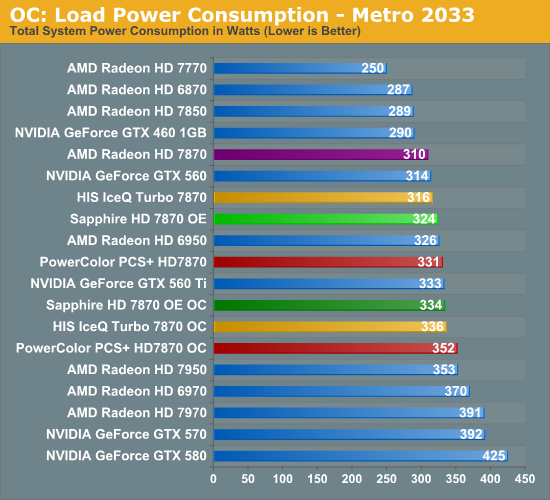
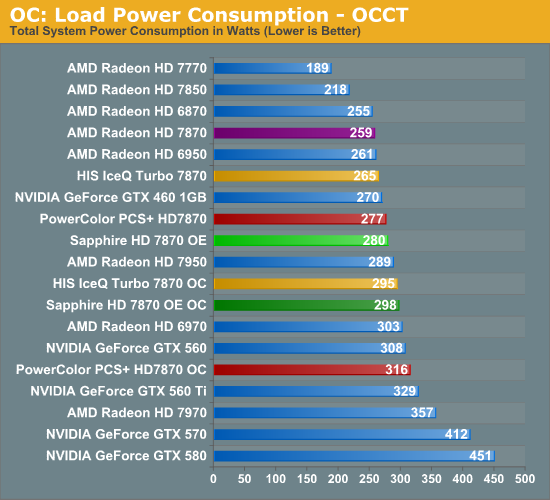
Our overclock pushed up power consumption by 10W under Metro and 18W under OCCT. Without any overvolting capabilities power consumption is largely kept in check, though we're still drawing nearly 40W more at the wall compared to a reference 7870.
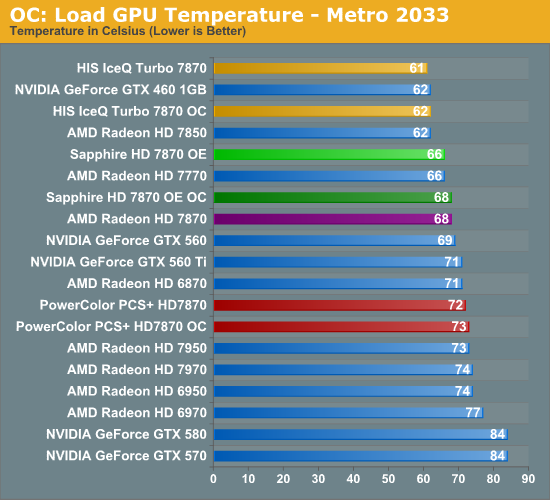
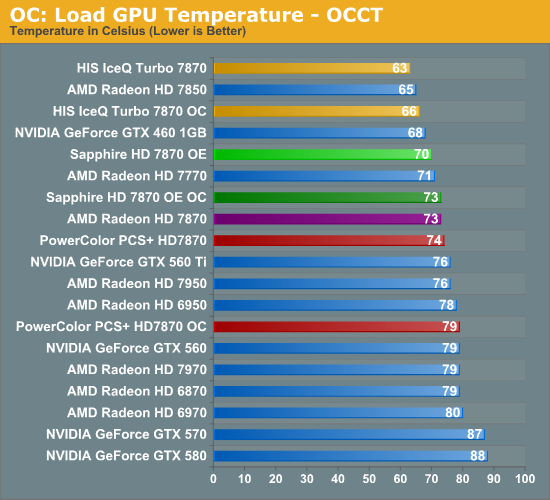
The slight increase in power consumption (and thereby heat generated) does little to faze the HD 7870 OE much here. Temperatures rise between 2-3C; even under OCCT the card is still relatively cool at 73C.
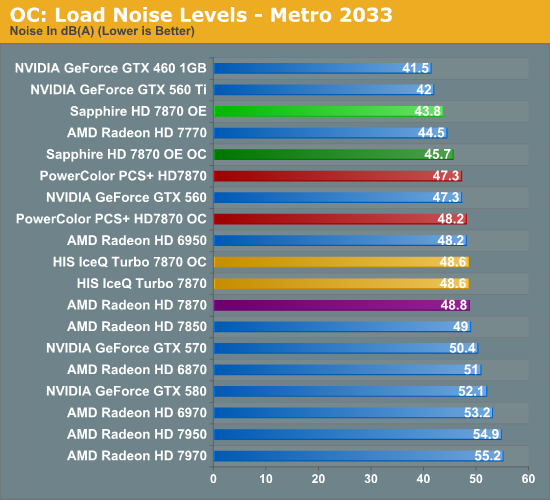
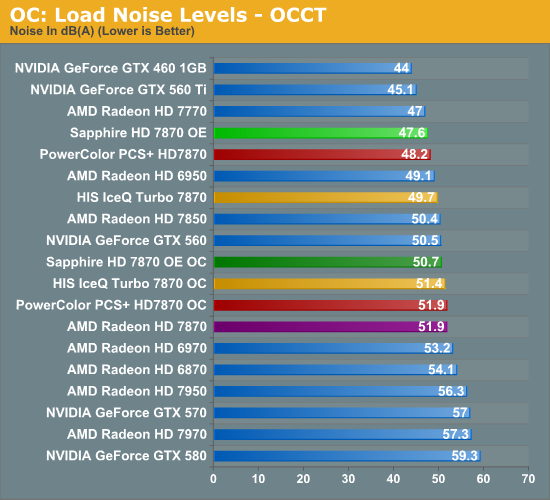
The tradeoff for holding those temperatures however is that the HD 7870 OE does give up some of its noise advantage. At 45.7dB under Metro it still easily maintains its reputation as the quietest 7870, but its lead has diminished and by the time you move into OCCT it's not significantly quieter than any other overclocked 7870.
Finally, how does performance look? We'll skip the running commentary on performance, but overall overclocking the HD 7870 OE has the expected performance improvements. In games where the 7870 was already close to the 7950 to begin with overclocking can push performance ahead of stock 7950 performance, which makes the HD 7870 OE's low noise all the more impressive. The fact that we only hit 1150MHz on our sample does mean that it slightly trails the other retail 7870s we've reviewed, however.
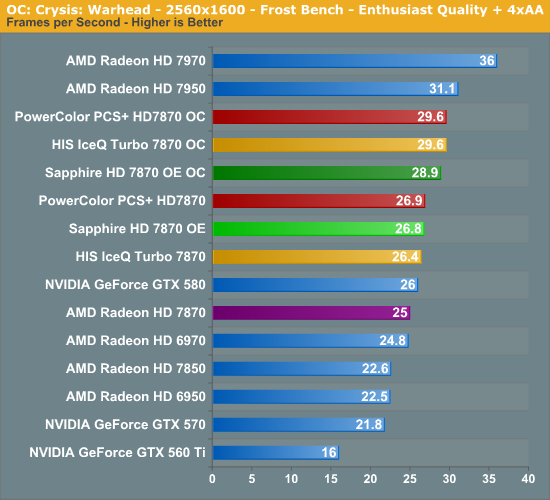
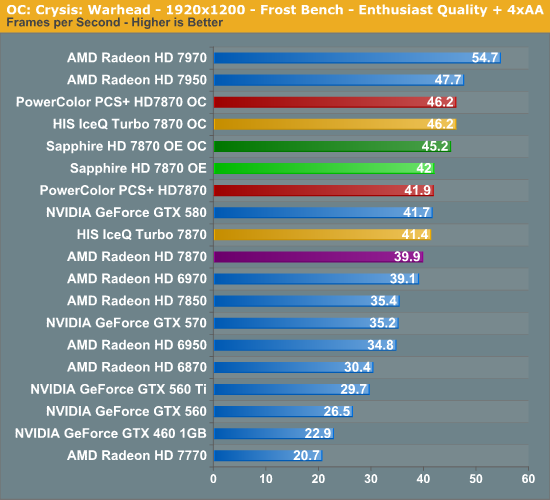
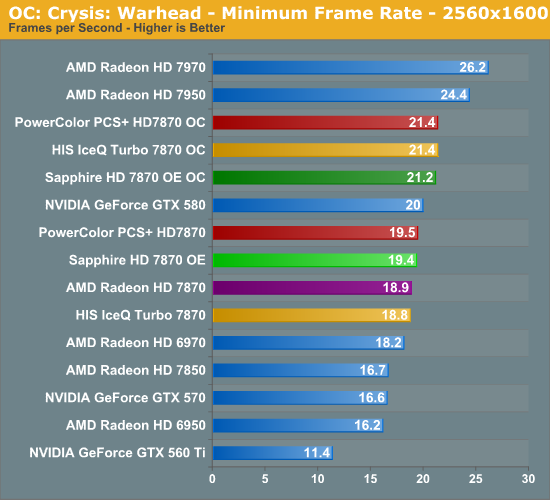
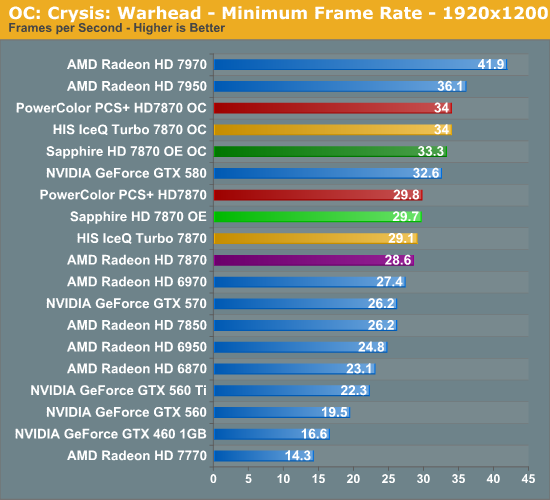
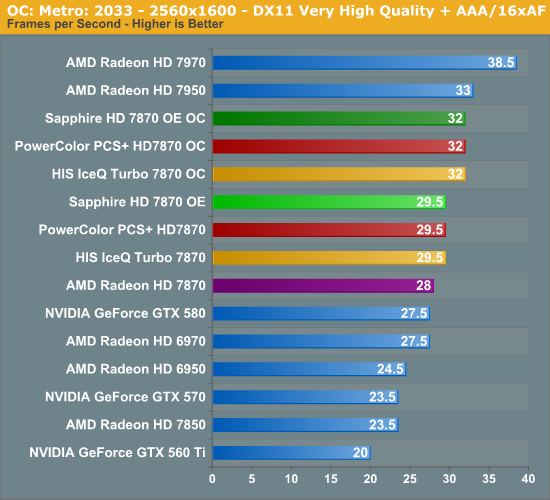
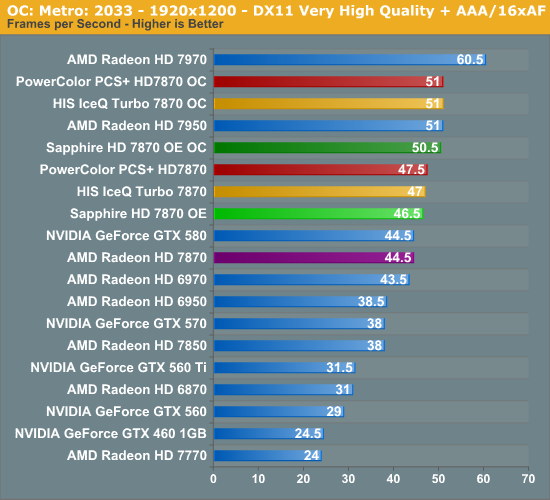
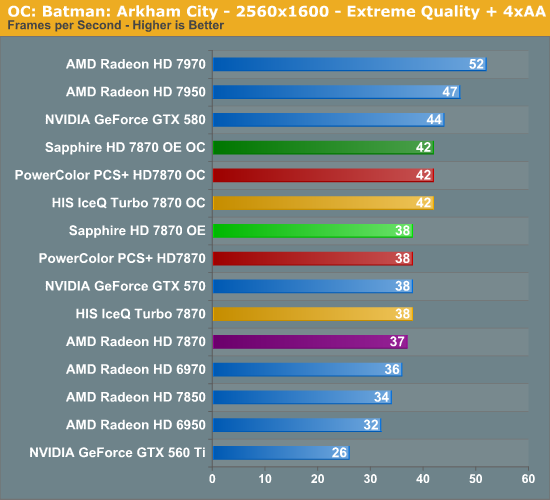
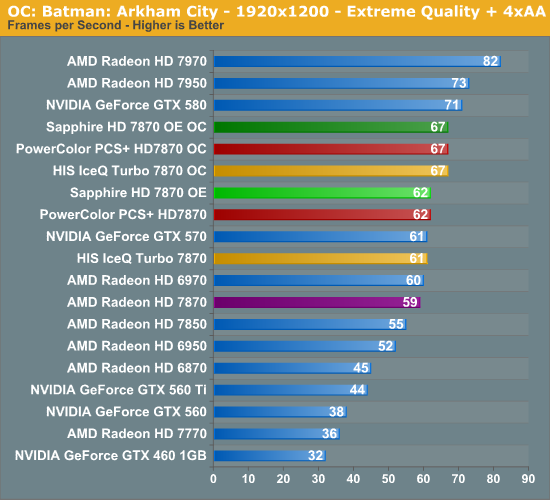
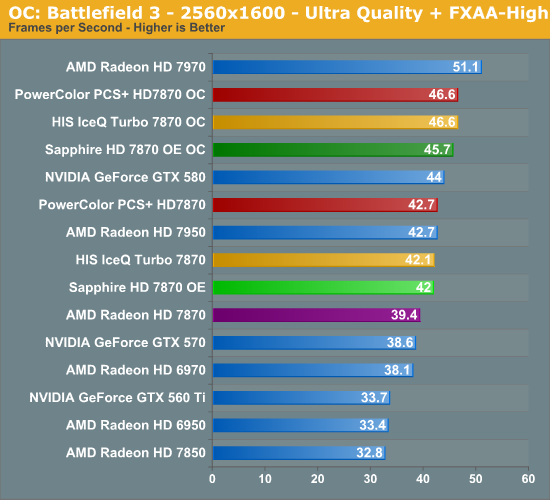
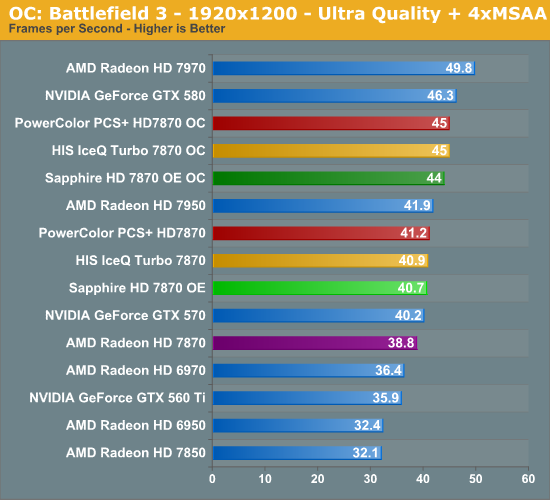










37 Comments
View All Comments
Galidou - Tuesday, May 1, 2012 - link
LOL CeriseCogburn, don't be such a mad fanboy... Answering to a simple inflammaroty sentence with a whole paragraph... Go buy a GTX 680 and throw eggs at AMD's headquarter like you were doing before commenting here :POrigin32 - Sunday, April 29, 2012 - link
And another typical day at Anand. AMD fanboys accusing writers of being Intel fanboys and Nvidia fanboys accusing them of being AMD fanboys. lolSpunjji - Friday, May 11, 2012 - link
It's tiring, isn't it.vicbee - Monday, April 30, 2012 - link
Ya'll should just get a life. Seriously... most arguments revolve around $10-30 price difference and possibly 10 fps for similar card category. Yawn!Until last week I have a liquid cooled GTX285 until a transistors fried. I was kind of glad something happened because I wanted a newer card but just couldn't fathom taking my rig apart to uninstall the liquid circuit. And who in their right mind would buy a 2nd hand card with a liquid cooling add-on... problem solved.
I've only owned higher end Nvidia cards so this time around I thought I'd try an AMD and got the Sapphire discussed in this article. It's a great card (like my Nvidia cards were great cards) and because it's an upgrade I get 20 fps more than with the old card. I did have a software install issue tied to a missing something .dll but on the 3rd download it solved itself. Problem solved now back to gaming...
Autisticgramma - Monday, April 30, 2012 - link
@CeriseCogburn. You doth protest too much.Next you'll be telling us that nVidia's Tegra 2 is better than the (new AMD card).
nVidia Isn't innovating, its reacting to AMD offerings. (in the desktop graphics realm) Granted most of the cards are about 10% better, and about three months later for about the same price.
When Fermi was released, it was obviously a data center add in card, the price, the heat and performance (for graphics) was outrageous.
I Tend to agree with the nVidia fan boys that they're (nVidia) holding stuff back, kepler looks good on paper, and the point of availability has been pounded to death.
If they can crush AMD, why don't they?
I'd be happy to give them my money, if they weren't the lazy hare in this race.
-gramma
Stempy59 - Monday, May 7, 2012 - link
Hmn, under clocked 680 still better, yeah the price is higher but they will be more available soon!Spunjji - Friday, May 11, 2012 - link
Thank-you for that enlightening apples-to-oranges comparison. Meanwhile it was nice to see how AMD's second-tier card stacks up (better than its top-tier card, hilariously).